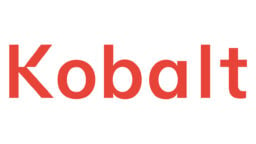Kobalt Music Group‘s revenues increased 23.5% in its 2017 financial year, up to $321m.
The figure is up $61m year-on-year, and up nearly $100m on the $226m the firm posted two years previously.
The numbers were revealed in Kobalt’s latest annual accounts – obtained by MBW – which cover its fiscal full-year for the 12 months to end of June 2017.

Speaking to MBW this week, Kobalt boss Willard Ahdritz (pictured, main) said that his firm’s global headcount grew by 30.2% in FY2017, from 344 people to 448.
He added that Kobalt’s staff count will increase by another 100 people in its current financial year (to end of June 2018) – and that this employee base will grow again by a further 200 people in FY 2019.
That would result in a global headcount by next summer in excess of 700 people.
Ahdritz stressed, “To say we want to hire more people is great, but we are being smart about how we grow.”
“We are walking the walk and as a result, the best talent in the recordings and tech industry wants to come to Kobalt.”


Ahdritz also revealed that Kobalt’s annual revenue in its current financial year (FY2018) is on track to reach close to $500m.
“We’re now starting to see the market growth we have predicted for a decade – and it’s a beautiful thing,” he said. “We are no longer the only optimists.”
Kobalt’s gross profit grew 38.6% to $42.5m in FY2017, according to its accounts – with its resultant gross margin reaching 13.2%, up from 11.8% in the prior year.
“We’re now starting to see the market growth we have predicted for a decade – and it’s a beautiful thing.”
Operating losses in FY2017 widened 45.7% to $24.3m – largely due to interest related to Kobalt’s acquisition of Fintage House’s music companies – while post-tax losses stood at $33.1m.
Another important take on Kobalt’s profit performance: its EBIDTA losses in FY2017 were down, from $16m to $14m.
Said Ahdritz: “We are investing heavily in a future [annual recorded music] market that we see reaching $50bn, so profit is not our primary parameter today.
“People talk about the industry reaching $30bn by 2025 with 600m subscribers. I believe by 2025 [streaming subscribers] will be bigger than 600m and we are going to see a number of different revenue streams affecting the industry too.”
Kobalt raised $89m in capital last year across two funding rounds, respectively led by Hearst Entertainment and Bill Maris’ Section 32.
Ahdritz revealed that the second of these two raises led to a post-funding valuation for Kobalt of $789m. Considering the company’s growth curve, that number appears likely to continue to head upwards.
“The [traditional] television industry generates $600bn in revenue, when music is bigger and more important to people than [other media].”
“People spend more time on TV than any other media,” Ahdritz tells MBW. “But I believe that will start to see the time spent on music be bigger than TV. That potential even just in advertising is enormous.
“The [traditional] television industry generates $600bn in revenue, when music is bigger and more important to people than [other media].
“There is a huge opportunity to capture advertising and subscription in the years ahead.”

Kobalt broadly has four operating divisions across its company: its publishing company, its recorded music division (recently rebranded as AWAL and backed by a nine-figure investment) plus its collection society AMRA and its Kobalt Neighbouring Rights operation.
Its FY2017 accounts handily breaks down the performance of each of these divisions.
Kobalt’s Publishing revenues were up 13.8% in the period to $260.5m, while the division’s individual EBITDA grew to $15.4m.
(For comparison’s sake, Warner/Chappell‘s annual revenues in the 12 months to end of September 2017 were $572m.)
Kobalt’s recorded music division saw revenue more than double to $39.6m in FY2017, with an EBITDA loss of $11.2m.
Sales at its AMRA society grew 59.8% to $34.6m with a $3.5m EBITDA loss, while its Neighbouring Rights division posted $6.7m in net revenues with a $3.7m profit.



Kobalt Music Group also owns Kobalt Capital Ltd, which manages external funds that acquire copyrights.
Last year Kobalt announced the second of these funds, a $600m investment, which was used to buy SONGS Music Publishing in a $100m+ deal.
“People will start to really see in the coming years what the combination of technology and freedom can create,” said Ahdritz.
“The gatekeepers of this industry are going, giving fans and artists freedom, and the result will be wonderful.”
“The gatekeepers of this industry are going, giving fans and artists freedom, and the result will be wonderful.”
He added: “We will keep investing and investing to maximise our growth and build technology that we can leverage.”
All of Kobalt’s divisions now share technology, internally branded ‘K-Tech’, which Ahdritz claims is “five years ahead of the competition”.

Ahdritz further predicted that next week’s direct listing of Spotify on the New York Stock Exchange would have positive ramifications for the music business.
“Spotify’s [flotation] will create even more excitement around music, will increase the information flowing to all places in the industry and also create interest in this business from new investors,” he said.
“All industries need growth and innovation – Kobalt continues to display both, and we will continue to invest to stay ahead.”
You can read Ahdritz’s statement to Kobalt’s shareholders in full below.






